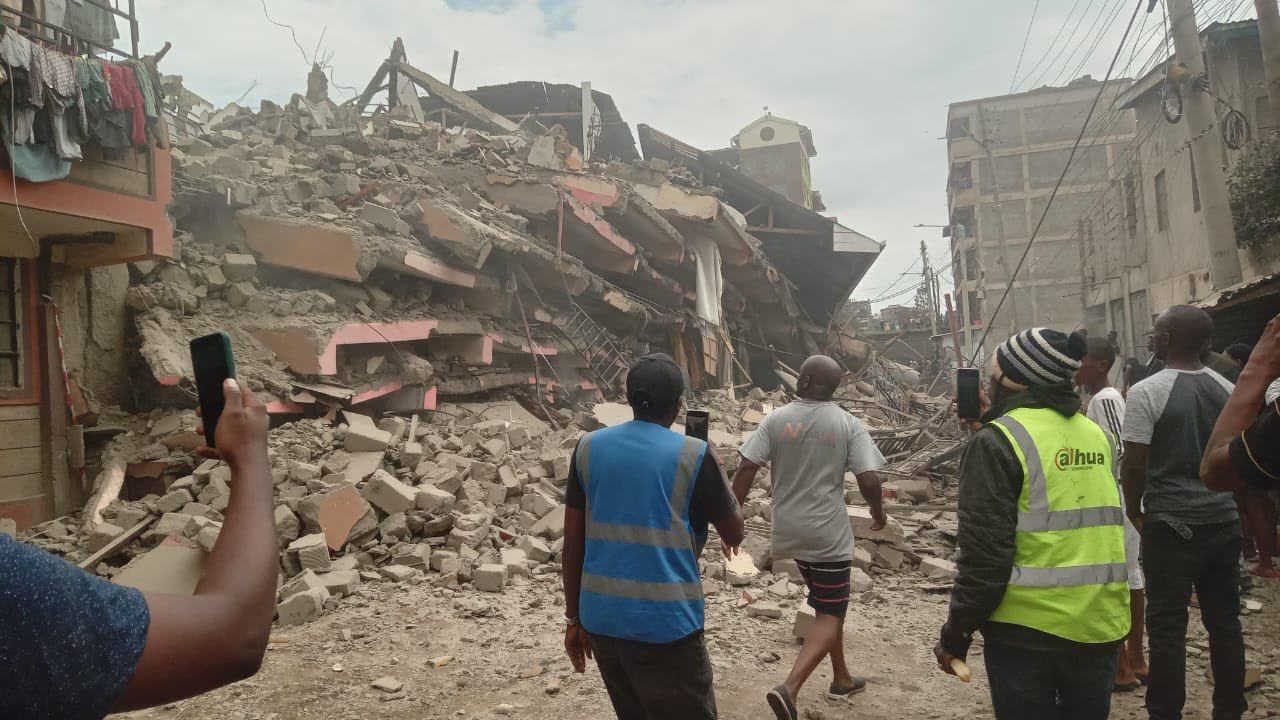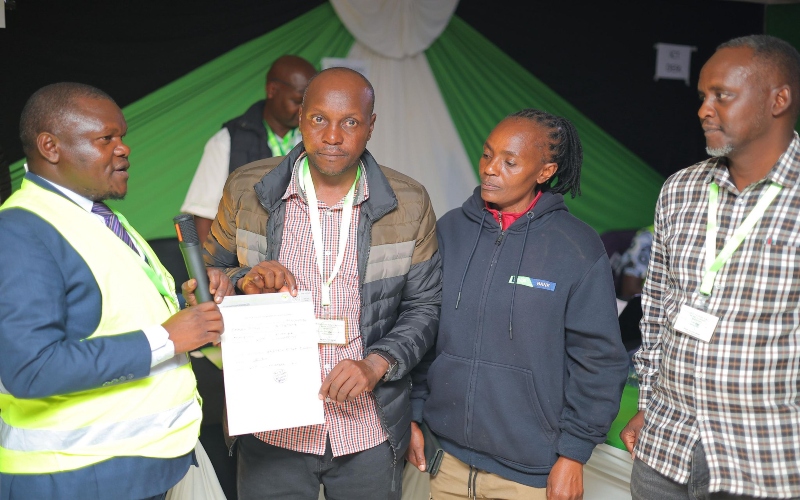Grim picture of urban safety as 688 unsafe structures flagged in Nairobi

While Nairobi has demolished 119 unsafe permanent structures, 10 more are slated for removal following further testing.
Nairobi's construction sector faces a safety and regulatory crisis as revealed in the Status of the Built Environment report by the Architectural Association of Kenya (AAK).
Nearly a decade after its formation, the National Building Inspectorate (NBI) has audited 20,649 buildings across Kenya, identifying 962 as dangerous and in need of urgent testing, evacuation, or demolition.
More To Read
- City Hall targets Eastleigh, Ruai, Kasarani in crackdown on illegal structures
- Mombasa launches major crackdown on unsafe buildings with 60-day ultimatum
- India: Four school children dead, several feared trapped after roof collapse in Rajasthan
- Construction industry braces for higher costs as new taxes kick in
- Court halts ouster of Nairobi housing chief Lydia Mathia amid eviction row
- Mombasa authorities arrest developers, engineers defying stop orders after building collapse
Nairobi accounted for 688 of these hazardous structures, the highest nationwide, highlighting the capital's struggles with poorly regulated development.
Despite these alarming findings, only 210 of the flagged buildings nationwide have undergone structural integrity testing.
This represents a fraction of the over 12,000 unsafe structures flagged by the NBI, underscoring systemic gaps in enforcement and technical capacity.
Illegal structures
Informal developments, particularly those encroaching on riparian, railway, and road reserves, further complicate the crisis, with over 10,000 such illegal structures demolished to date.
The safety risks come amid inefficiencies in the building approval process.
Between January and October 2024, Nairobi City County received 1,761 development applications, marking a 13 per cent decline from the 1,985 applications recorded during the same period in 2023.
While 94 per cent of these applications were approved projects valued at Sh273 billion, a 55 per cent increase from 2023 revenue from approvals fell by Sh214 million to Sh1.67 billion.
The approval process remains riddled with inefficiencies.
AAK members reported delays, unreliable online systems, and unresponsive feedback mechanisms as major challenges.
Errors, such as the recurring "plinth area" message, hinder navigation, while invoicing and payment systems remain inconsistent.
Corruption remains rampant, with 50 per cent of developers admitting to giving bribes to expedite approvals.
"Developers face significant challenges, including delays caused by uncommunicated document requirements and inexperienced reviewers offering irrelevant comments," the report noted.
Other Topics To Read
Reduce human intervention
AAK has called for reduced human intervention in the permitting process, automated billing systems, predictable fees, and standardised county-level systems akin to those used by the Kenya Revenue Authority to enhance efficiency and accountability.
The crisis extends beyond approvals.
In 2024, site inspections in Nairobi more than doubled, rising from 10,655 in 2023 to 28,560.
However, 17,040 suspension notices 59.6 per cent of inspected sites were issued due to non-compliance, a sharp increase from 7,042 notices in 2023.
The rise in inspections has not been matched by a significant improvement in adherence to safety standards.
Structural failures and building collapses remain a pressing concern.
Four building collapses were recorded in Nairobi in 2024, including cases in Uthiru, Kahawa West, Ruiru, and Kiamaiko.
While these incidents may seem few, the NBI has flagged 42 of 1,333 inspected buildings nationwide as dangerous, recommending immediate evacuation where necessary.
Demolitions
Efforts to mitigate safety risks through demolition have been insufficient. While Nairobi has demolished 119 unsafe permanent structures, 10 more are slated for removal following further testing.
This pace of enforcement is inadequate given the scale of unsafe developments. The lack of consistent audits and a systematic approach to addressing non-compliance continues to endanger public safety.
"Urban centres like Nairobi have become hotbeds for non-compliance, driven by rapid urbanization and insufficient regulatory oversight," the report stated.
Counties like Kisii and Uasin Gishu also reported high numbers of unsafe buildings, with 703 and 368 flagged structures, respectively.
By contrast, less urbanised counties like Lamu and Isiolo recorded fewer cases, reflecting the correlation between high-density development and safety risks.
To address these challenges, the Architectural Association of Kenya has urged counties to adopt reforms that prioritise transparency, integrity, and efficiency.
Top Stories Today















































